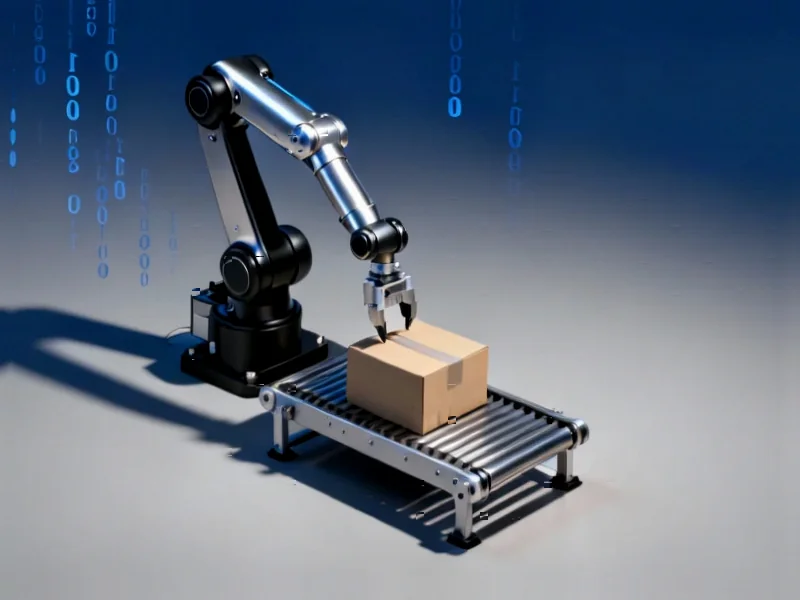According to Manufacturing.net, this week’s manufacturing landscape features multiple significant developments including a deadly explosion at an Accurate Energetic Systems plant in Tennessee on October 10, 2025, that killed 16 people and involved up to 28,000 pounds of explosives. The episode also covers Rivian laying off approximately 600 workers (4% of its workforce) and a remarkable story of four former employees purchasing a shuttered Gunite facility in Illinois to restart operations as Rockford Brake Manufacturing. Additional stories include Matter Neuroscience’s six-pound phone case innovation, Heli-D’s partnership with Xbox for aerial gaming screen promotion, and agricultural drones gaining global traction. These developments collectively paint a picture of an industry facing both tragedy and transformation.
The Persistent Safety Crisis in High-Risk Manufacturing
The Tennessee explosion represents more than just another industrial accident – it highlights systemic safety challenges in explosives and chemical manufacturing that have persisted despite decades of safety improvements. What’s particularly concerning is that such catastrophic failures continue occurring in facilities handling volatile materials, suggesting either compliance gaps, aging infrastructure issues, or procedural breakdowns in safety protocols. The industry faces increasing pressure to implement advanced monitoring systems and real-time hazard detection technologies that can prevent such tragedies. This incident will likely trigger renewed regulatory scrutiny and potentially stricter safety requirements for facilities handling energetic materials, which could significantly impact operational costs and insurance premiums across the sector.
The Dual Workforce Reality: Layoffs and Employee-Led Rescues
Rivian’s workforce reduction of 600 employees contrasts sharply with the story of former employees resurrecting a shuttered factory, revealing the complex employment dynamics shaping modern manufacturing. The EV sector’s volatility, driven by scaling challenges and fluctuating demand, creates workforce instability even in growing segments. Meanwhile, the Gunite facility revival demonstrates an emerging trend of experienced workers taking ownership of manufacturing assets that larger corporations deem unviable. This worker-led approach often brings deep operational knowledge and community commitment that can resurrect facilities through leaner, more agile business models. We’re likely to see more such transitions as baby boomer retirements create opportunities for experienced operators to acquire assets at favorable terms.
Manufacturing Innovation’s Diverging Paths
The week’s stories reveal manufacturing innovation moving in two distinct directions: toward both extreme specialization and radical cross-industry applications. Matter Neuroscience’s six-pound phone case began as an experiment taping phones to dumbbells, showing how manufacturing increasingly serves niche behavioral research markets. Meanwhile, Heli-D’s aerial billboard partnership with Xbox demonstrates manufacturing’s role in creating experiential marketing platforms that blend digital and physical realms. Agricultural drones represent another convergence point, where manufacturing expertise in lightweight materials, battery technology, and precision systems creates value across completely different sectors. This diversification suggests manufacturers must increasingly think beyond their traditional markets to identify adjacent opportunities.
The Unrelenting Pressure for Operational Excellence
Behind these headline stories lies the constant manufacturing challenge of improving Overall Equipment Effectiveness (OEE) while managing staffing, turnover, and costs. Companies like Claremont Foods are leveraging new tools to drive productivity gains in an environment where margins remain tight despite inflationary pressures. The agricultural drone adoption story particularly illustrates how manufacturers are helping other industries achieve similar efficiency gains through technology deployment. As labor markets remain competitive and input costs volatile, the focus on OEE and operational excellence will only intensify, driving increased investment in automation, data analytics, and workforce development technologies across the manufacturing spectrum.
Industry Implications and Future Trajectory
Looking forward, these developments signal several key trends that will shape manufacturing through 2026. Safety technology investments will accelerate, particularly in high-risk sectors, driven by both regulatory pressure and insurance requirements. The workforce model will continue bifurcating between large corporate employment and employee-owned ventures, creating new business structures. Innovation will increasingly come from cross-industry applications rather than single-sector focus, requiring manufacturers to develop more flexible R&D approaches. Most importantly, the relentless pursuit of operational efficiency will drive technology adoption across all manufacturing segments, from food production to industrial equipment. Companies that can balance safety, workforce stability, and innovation while maintaining cost discipline will emerge strongest from this period of transformation.




